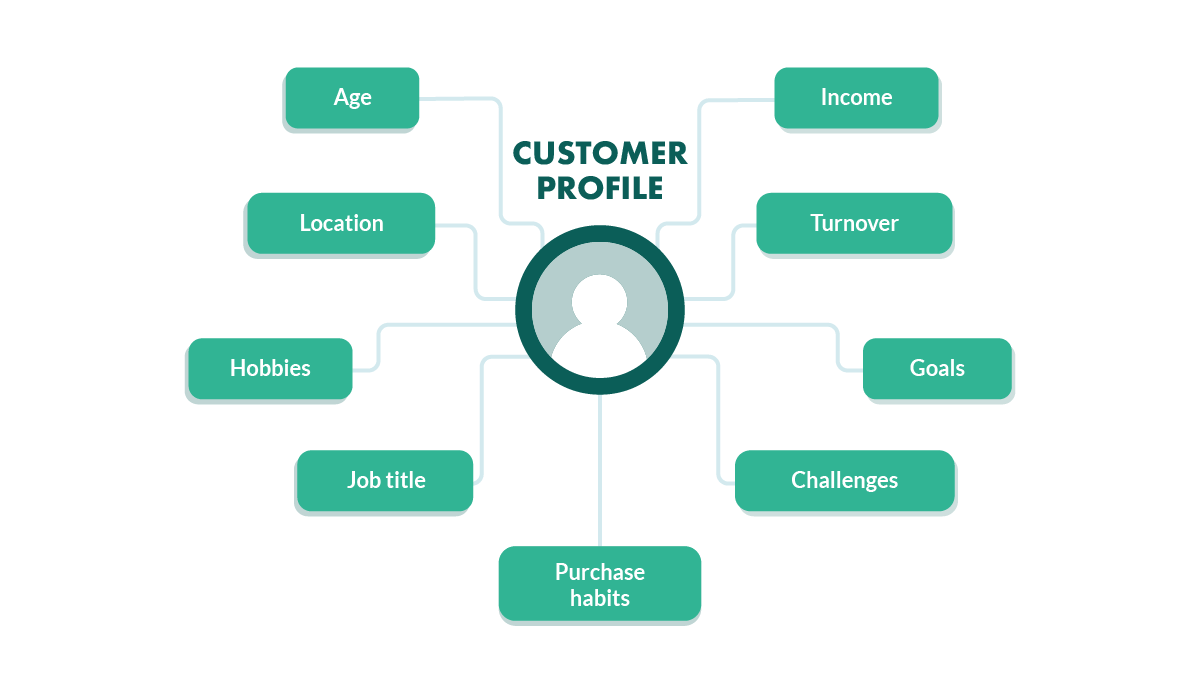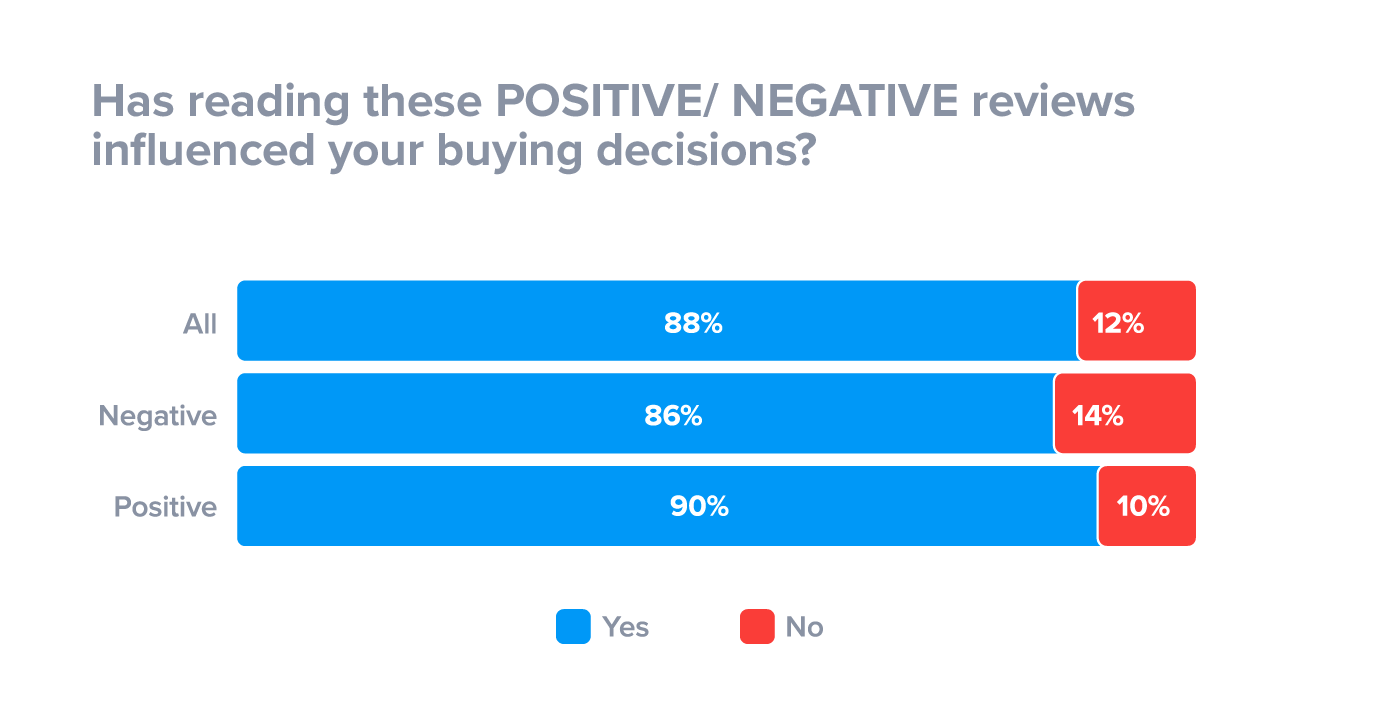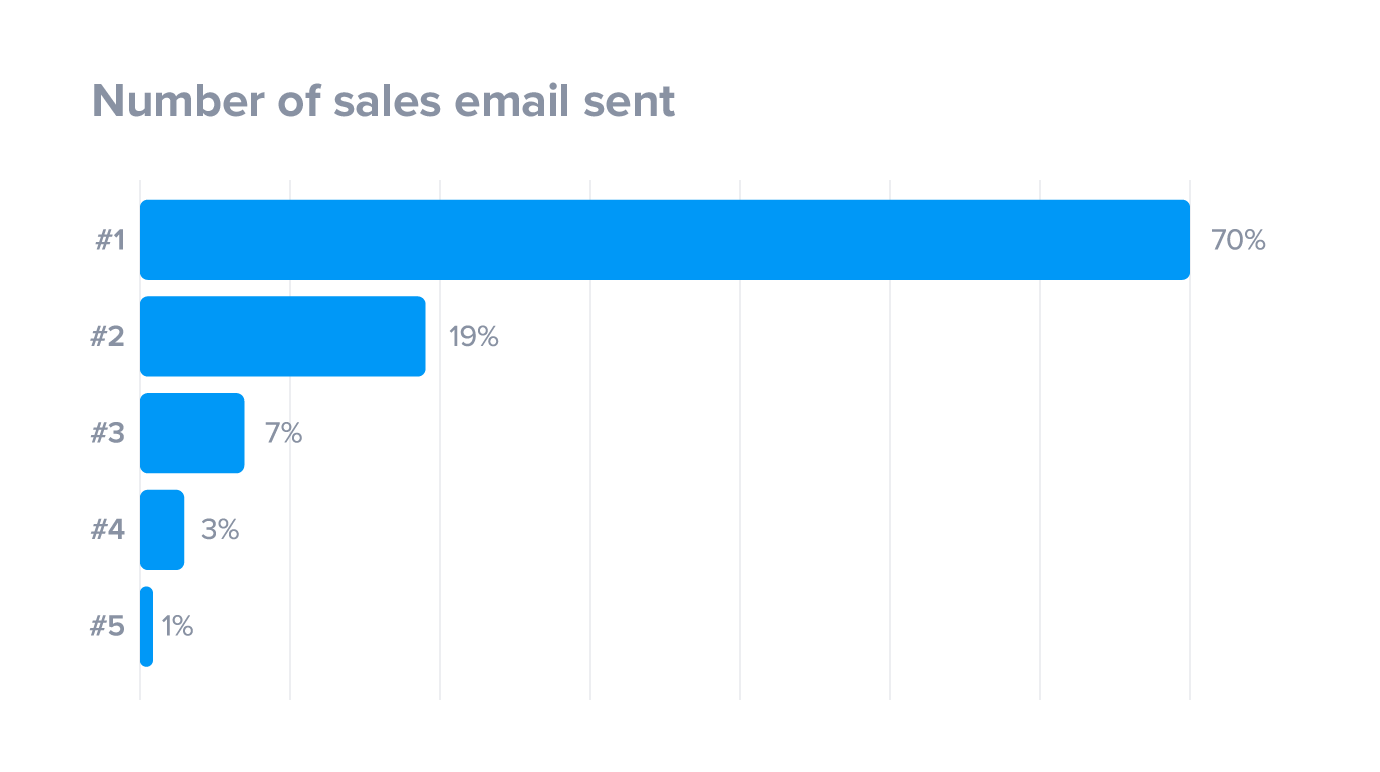Generating new leads is hard work.
Turning those hard earned leads into a closed sale is equally difficult. Just look at some of the obstacles sales people are up against:
- 55% of salespeople said that ‘budget restraints’ was the number 1 or number 2 reason that stronger sales opportunities failed.
- The average win rate – closing a sale after getting the opportunity to offer a proposal or give a quote – is 47%
- Across industries, sales conversion rates only have an average of 2.46%–3.26%
Imagine if you were given the exact process the best sales reps in the world use to reach their targets.
Or even better:
What if you were given a proven formula that helps you close more deals.
You would want it, right?
Shockingly, 20% of top sales reps close 80% of all sales deals.
Why are they closing so many deals?
Well, they're using proven sales techniques that take them from being a sales rep that just meets their targets versus a sales rep that consistently reaches their targets and outperforms everyone else on the team.
Their little secret?
It's a 9 step formula to creating a winning sales pitch.
Best of all, these 9 steps can be applied so you can create a brand-new, deal-closing sales pitch in just 10 minutes!
Less pitching. More conversations.
Let’s face it, there’s nothing appealing about the idea of the "traditional" sales pitch.
The term “pitch” often conjures up images of plaid suits, talking at prospects rather than inviting conversation and discussion. It’s not exactly the most attractive image to have in mind - that’s why we recommend you retire the term “pitch”.
The traditional pitch offers two outcomes:
- Your prospects will love what you have to offer, which will lead to a successful sale
- They’ll hate it, and all you’ll get is a polite decline (and that’s if you’re lucky!).
Successful selling is about building a relationship with your prospective clients and demonstrating how your product or service offers a direct solution to their problem.
As Jacqueline Smith says:
A successful sales pitch isn’t a monologue. It’s a dialogue.
And I’m sure that the idea of a dialogue between you and your customers is much more appealing than a monologue, right?
Buyer’s needs come first
Once you’ve moved away from the idea of a “pitch”, you can start to form a conversation based around your buyer’s needs. Everyone is different in B2B sales, and when you pitch your product, you need to communicate clearly how it can benefit each individual buyer.
And I don’t mean knowing the company they work for and the amount of budget they have available. I mean really understanding who the buyer is, such as whether your buyer is a left-brain thinker or a right-brain thinker.
If you think this doesn’t apply, think again.
For example, left-brain thinkers are more analytical, logical and practical whereas right-brain thinkers are more innovative, intuitive and emotional, as the graphic from Visual.ly illustrates below:

Now you know the difference, you can approach your conversation in the right way.
To add on to this:
A report by Forrester found that most salespeople (73 percent) do not understand the needs of the companies they are selling to. Only 27 percent of buyers believe that sales reps have adequate knowledge of their business.
The importance of showing that you understand your buyer’s needs cannot be stressed enough as it helps to build trust between you and your prospects, and to clearly display a need for them to purchase the product or service you offer.
Tell a story to create a connection
When was the last time you told the story of your brand during a sales pitch?
When it comes to selling, telling the story of your brand and product can make all the difference. By doing so, you establish a deeper connection with your buyers that goes beyond the product itself. This connection is built on the foundation of shared experiences, values, and beliefs that your brand represents, making it personal and meaningful to them.
And here’s the thing:
Storytelling has been scientifically proven to boost sales.
According to author Erik Luhrs, “In sales situations, stories allow the subconscious mind of the prospect to truly ‘get’ and see the valuable application of the solution.” This is because neuro-linguistic programming shows that “all humans run 99% subconsciously and 1% consciously.”
I’m not losing you with the science and research, am I?
Good!
Because by pairing the story of your brand and product with facts and figures that back up your claims, you can quickly engage modern buyers to want to know more. Then, use this opportunity to tell the story of your brand, which is much more likely to closing the deal and generate revenue.
OK, so now that we’ve covered the components of successful selling, how can you transfer these into writing an effective sales pitch in under 10 minutes?
Let’s find out.
9 steps to writing an effective sales pitch
To help with your sales pitch structure, we've put together nine simple steps for you to use in order to create your best sales pitch that’s guaranteed to sell.
If you can’t pitch correctly or aren’t willing to pitch consistently, your business will struggle to maintain a healthy revenue flow.
But when you know how to pitch the right way and are willing to put in the work, pitching opens up new opportunities to build relationships and generate more income for your business.
To help with your sales pitch structure, here are nine simple steps for you to use to write your best sales pitch that’s guaranteed to sell.
1. Identify your pitch targets
Successful pitching starts with knowing WHO you are going to pitch.
To identify your pitch targets, here are a few steps to take:
- Describe your offer and the problem it solves. Think of this as your elevator pitch and focus on creating two or three short sentences.
- List every feature of your offer. Then, brainstorm the benefits that each feature could provide. Explain how each benefit could solve a problem in people’s lives.
- Ask yourself which people experience those problems. Identifying these people provides you with the first peek into your pitch targets.
For deeper insights, tap into your CRM database and customer profiles to gain a better picture of the types of people you will pitch.

If you can segment your pitch toward groups of people, you can tailor to address specific needs or pain points for the people you want to interact with.
2. Capture people’s attention
You can end up writing the perfect pitch but no one is going to read it unless you can grab people’s attention.
According to Copyblogger, 80% of people will read your headline and only 20% will read the rest.
The headline of your pitch, whether it’s the subject of an email or the first line in a LinkedIn message, is the most influential part of your entire pitch.
Remember, your headline isn’t about selling. Your goal is to introduce people to your brand or product in a way that offers useful information for a prospect to learn more about your business.
Here are some examples of headlines that proved effective:
- CityCliq used a straightforward approach “create a website for your business” versus a solution focused approach “get found faster.” The result was an 89% increase in signups for the straightforward approach.
- Highrise changed their headline from “Start a free account” to “30-day free trial” and achieved 30% more conversions
- Quicksprout created headlines for Kissmetrics that compared their product with Google Analytics (a product many people are familiar with) which boosted conversions by 40%
When it comes to writing a compelling headline, here are a few tips based on real world data:
- Connect to people’s emotions. Top performing headlines use emotionally driven information to connect with people. It’s also a great way to show your personality and appeal to people on a human level.
- Give your headline some length. Research from CoSchedule found that headlines between 16 and 18 words produce the most engagement.
- Keep it short and sweet. In contrast to the previous point, 41% of people are checking their phone from a mobile device. If you’re sending a pitch via email, using five to six words in a subject line may be the most that’s read to drive engagement.
These are just a few ways to grab people’s attention with your headline. Remember to continually test headlines to improve the chances of people opening and reading your entire pitch. Once you have people reading your pitch, let’s look at a few ways to get them hooked.
3. Back it up with facts
A survey conducted by Dimension Research found that 90% of respondents claimed that reading positive online reviews influenced their buying decisions. With this statistic in mind, your pitch needs to be full of facts and statistics that back up your claims.

When it comes to writing your sales pitch, be sure to include testimonials and case studies, which also contain statistics and figures to prove the success of your product or service. If you claim you can solve your buyer’s main problems, show them how with facts.
4. Ask for the sale
You should now have a pitch that addresses your buyer’s problems, shows how your product or service offers a solution, and backs this up with facts and statistics to support your claim. The next step is to give your buyer some clear instruction on what they need to do next.
So what would that be?
Ask for the sale of course!
Incredibly, 85% of the interactions between salespeople and prospects end without the sales person ever asking for the sale.
Yes, you read that correctly, 85%!
By now, you’ve convinced your prospective customer of the brilliance of what you’re offering and next up is how they can take advantage of your product or service. Do they need to click a link to your website? Or pick up the phone and call you directly?
Don’t be shy to ask for the sale. You’ve come this far, so why stop now?
Whatever action is required; make it clear with a well-written call to action
5. Grammar and spell check
Finally, once you’ve written your sales pitch, don’t forget to check your spelling and grammar.
There’s nothing worse than being let down by a few mistakes that could be corrected before clicking send.
Once you’ve checked through your written pitch, it’s time to send it out to your buyer. Remember to tailor your pitch to each individual and make it as personal to him or her as possible.
6. Don’t forget to follow up
A study by Yesware found that 70% of email conversations end if a prospect doesn't reply to the first email.
However, there is a 21% chance you will get a response to your second email if the first goes unanswered.
These statistics further prove the importance of a follow-up email after the initial sales pitch.

The conversation doesn’t stop at the first attempt of your sales pitch. Don’t be shy to try and try again. After all, there is a 30% chance of you hearing back from your prospect after several follow-up attempts.
Not sure how to follow-up? Use the example found in our sales email templates guide.
7. Be systematic about pitching
Creating a consistent pitch strategy is going to be foundational for generating leads and sales.
You may be caught up with meetings and other daily obligations, however, sticking to a systematic pitching process can help provide steady growth.
- Determine the number of prospects you want to pitch at any given time
- Schedule the maximum number of appointments you intend to provide with prospective clients every week
- Use additional time to continue improving your pitch and testing your headlines to improve engagement, conversions, and performance
Every company needs a minimum number of prospects at any given time to ensure ongoing sales down the road. By pitching systematically, you can determine just how many prospects you need to reach in order to meet sales quotes and goals.
For example:
- Your business needs to sell four products per month
- On average, it takes three months from first contact with a prospect to close a sale
- If 1 out of 5 prospects respond to your pitch and eventually buys, you have a close ratio of 20%.

In this example, you need to have 60 leads at any point in time to consistently sell 4 products over a 3 month period. If you can increase your ability to pitch, you will only increase the number of leads and sales for your business.
8. Establish an emotional connection with your audience
When creating a sales proposal, it's important to remember that consumers don't make decisions based solely on logic or practicality.
Emotions play a big role in decision-making too.
That's why it's crucial to connect with your audience emotionally in your sales pitch.
To do this, highlight how your product or service can improve their life, solve a problem, or provide a unique experience. Using words that evoke emotions like excitement, joy, relief, or satisfaction is another great way to connect with your audience.
You can also share stories or case studies that demonstrate the positive impact of your product or service on others.
By crafting a sales pitch that connects with your audience on an emotional level, you can increase your chances of closing down on a sale.
9. Stand out from your competitors
In today's highly competitive digital world, it's essential to differentiate yourself from your competitors to capture your audience's attention.
There are several ways to do this in your sales pitch.
First of all, you can draw attention to the unique qualities or advantages of your product or service that set it apart from the rest. This might include faster delivery times, superior customer support, or more affordable pricing.
Another idea is to showcase client endorsements or success stories that actually demonstrate your expertise and abilities.
The result is more than likely to be building more trust with your audience as you’re proving your track record of success.
Lastly, use visual aids like charts or graphs to highlight the benefits of your product or service over competitors.
Conclusion
That’s it! And it’s all manageable within 10 minutes!
The next time you are about to contact a prospective customer, you use the tips outlined above, and then judge the results for yourself.
Remember; ditch the traditional idea of a pitch and keep your individual buyer’s needs at the forefront of your mind. Tell the story of your brand and the success of your products and services and back up with facts and statistics. Work hard to engage your audience and you’re sure to find a winning formula to close all future sales pitches
Customers also ask
How do different industries adapt the 9-step formula to suit their specific market dynamics and customer profiles?
The key to adapting the 9-step formula for sales pitches across various industries lies in understanding the unique characteristics and needs of each market.
For instance, in the technology sector, where products can be complex, the focus might be on simplifying concepts and showcasing innovation. Retail, being highly customer-centric, often focuses on creating an immediate connection with the consumer, highlighting the lifestyle benefits of products.
The core of this adaptation process involves deeply understanding the customer profiles of each industry and then aligning the sales pitch to address these specific needs and pain points.
What role does customer feedback play in refining and improving sales pitches over time?
Customer feedback is crucial for refining and improving sales pitches. It offers direct insights into what resonates with the audience and what doesn't. This feedback can come from various sources, such as direct customer surveys, sales performance data, or even social media interactions.
By analyzing this information, sales teams can identify areas for improvement in their pitch, like adjusting the language to be more engaging or providing clearer explanations of the product benefits. Continuous feedback integration ensures that the sales pitch remains dynamic and effective, evolving with changing customer preferences and market trends.
How do sales teams balance personalized pitches with the need for a consistent brand message across all communications?
Achieving a balance between personalizing sales pitches and maintaining a consistent brand message is a challenge that requires strategic planning. Personalization involves tailoring the communication to meet the specific needs and interests of the prospective buyer, which can vary significantly.
However, regardless of the level of customization, the core message, values, and positioning of the brand should remain consistent. This can be achieved by having a well-defined brand guideline that outlines the key messages, tone, and style of communication.
Sales teams can then use these guidelines as a framework within which they can personalize their pitches, ensuring that while the approach may vary, the underlying message and brand identity remain consistent.




